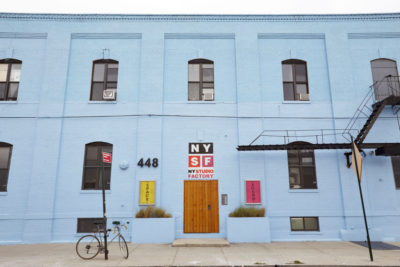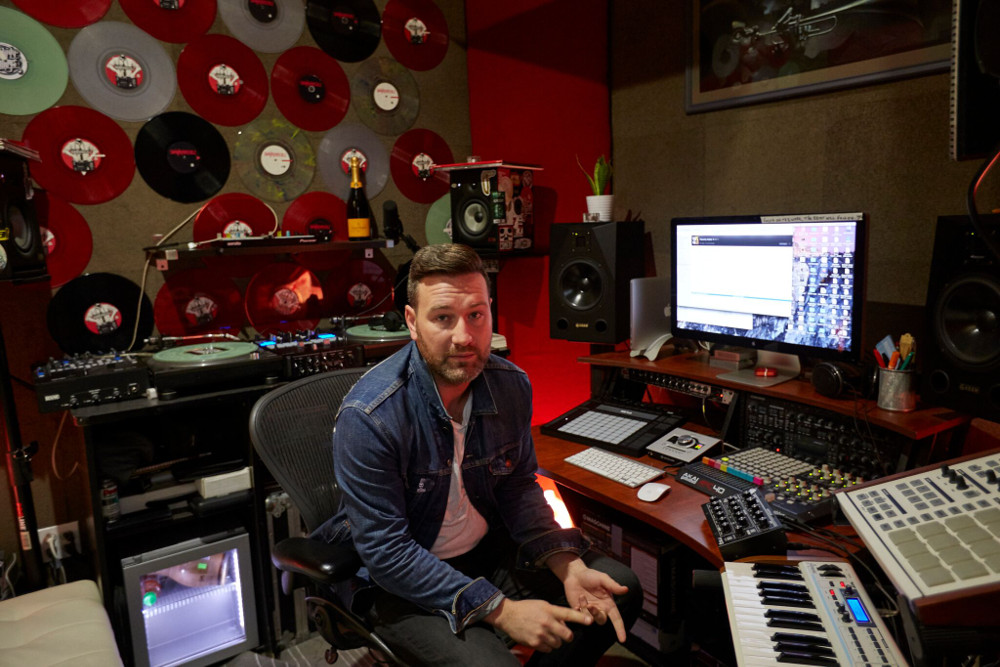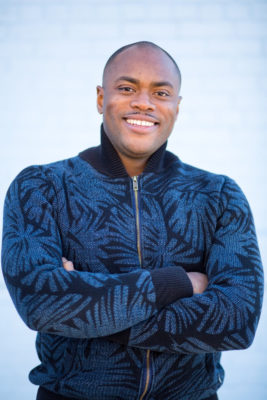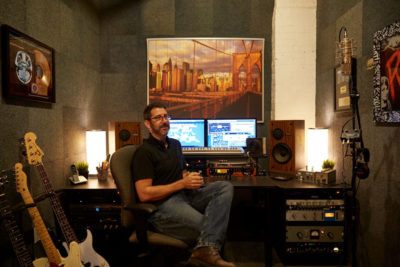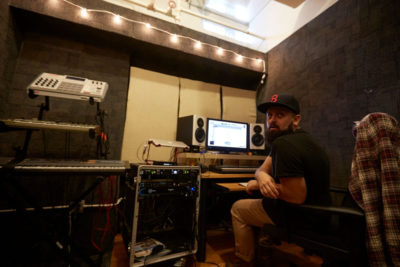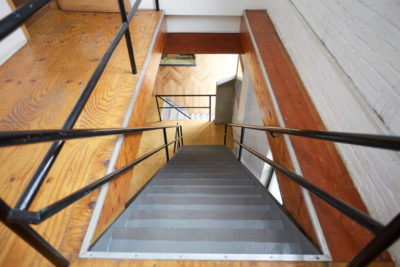NY Studio Factory: A Safe Haven for Sonic Practitioners
How different would producing music in New York City be if real estate were plentiful and inexpensive? Producers, mixers, mastering engineers and audio post pros could set up shop in their favorite neighborhood, expand at will, and change locations without missing a beat.
Well, as the Rev. Jesse Jackson famously said, the question is moot. Because if that’s the way things were in NYC…it wouldn’t be NYC. The premium on space and the subsequent battle for position – betwixt every trade you can name – is part of what defines the city and distinguishes the ones who actually manage to break through.
One solution to the overcrowding is shared workspaces, and its not just audio professionals who need them – and not just in New York City. Witness the rise of WeWork to a $16 billion company in just eight years, now standing as one of America’s fastest-growing leesees of new office space. In general, co-working spaces that can nail the convergence of community, amenities and professionalism remain on the rise.
With industrial buildings and studios in Brooklyn and Manhattan being routinely subjected to the wrecking ball to make way for condos, solo/small operators in audio have proven particularly vulnerable to NYC’s always-escalating real estate market forces. Such a changeover at 10 Jay Street in DUMBO that jettisoned Joe Lambert Mastering and numerous other operators into new locations is just one example of the uncertainty that can dampen the vertical in this region.
While music-centric safe harbors do exist for displaced pro audio practitioners, they can often prove less-than-ideal in the long run when it comes to high-spec critical listening environments. Midtown Manhattan’s famed The Music Building, for example, is home to a few fully-isolated pro recording studios, but its 12 stories are far more heavily populated by bands that are free to rock out and shake the walls at any hour, in keeping with the building’s core remit as a rehearsal space.
In other instances, audio-centric practices may be able to tuck into a WeWorks-type situation. Bond Collective in Gowanus turned out to be the perfect place for Kieran Kaye’s one-man shop Full English Post. With media production companies and a pre-existing VO booth onsite, Kaye had both a client base and key asset already baked in — a case of sharp instincts and good luck launching an audio business.
Laying the Foundation
A sweet spot that’s emerged for music creators in search of a stable home catering to their specific needs is NY Studio Factory. As the name suggests, music producers are the front-and-center clientele of this co-working concern, which has grown to encompass five locations across Brooklyn since its start in 2003.
Founded by visual artist and Crown Heights native Joseph Woolridge, NYSF has grown steadily to be a lifeline for audio pros in search of an environment that aspires to a WeWork level of amenities and attention to detail, while making each space’s acoustical properties and interactions a prime consideration. Tastemakers, startups, entreprenuers of all stripes — and even pop-up shops – can be found among its membership, but as the business’ name suggests studios are the stars.
NYSF’s origins in 2003 sprung from a time when private workspace solutions of any sort were difficult to come by. “I literally couldn’t find one,” Woolridge says. “That’s how I got started, out of my own necessity for workspace. Landlords back then weren’t motivated at all to service the creative community with workspace.
“There was then — and still is — a stigma around providing creatives with workspace,” he continues. “Most people when they hear the word artist, they think ‘starving artist,’ which couldn’t be farther from the truth. The creatives I knew then were hard-working, and had multiple side hustles to make sure they had a space to create. Back then, the average commercial property owner viewed providing a building full of startups and solopreneurs with workspace as a huge risk.
“They didn’t want 100 tenants, just one. As a result, what you did see were a handful of artists like myself taking large floor plates of space, signing big leases with landlords and real estate developers, which greatly lowered their risk. I would then re-imagine, bootstrap, and build the space so dozens of creatives and startups could work.”
In NYSF’s early years Woolridge saw how his concept could offer something different to an artistic subset, one that took their business as seriously as their craft. “When I started I only knew of a handful, and most of them don’t exist anymore, like 3rd Ward for instance,” he recalls. “They were here and strong in 2007 and now they’re not. Like many 10 years ago, I was a fan of theirs because from the outside looking in, they seemed authentic, and I was really rooting for them to win. But they’re not around anymore, and that’s unfortunate for their members and the people who relied on the services they provided.
“What I don’t see today are other organizations that, at their core, desire to genuinely be a catalyst for creatives to grow, and evolve. What I do see are a lot of speculative investors that read about national co-working trends or WeWork’s growing success and decide it’s a great opportunity to jump into face first: out-of-towners flush with cash, and overseas hedge funds that have no interest in building community through culture. They’re interested in seeing just how much they can mine out of the rising brand of Brooklyn and NYC, through real estate as a vehicle.
“I think people see the difference and choose us. For me the difference is as clear as choosing grass-fed organic or McDonald’s. There is certainly a market for the McDonald’s type of workspace, but that’s just not what we do.”
Updating the Offering
NYSF’s five locations now include 153 Roebling Street, 220 Ingraham Street, 44 Stewart Ave, 88 North 1st St. and the flagship location at 2 St. Nicholas Ave, just off the Jefferson stop in booming Bushwick.
“We’re small but our eyes are on perfecting our offering, member experience, and actively looking for suitable new locations in NYC,” notes Woolridge. “Our members have always needed private reliable workspace in close proximity to where they live and spend time. Over the years the range of industries we service has evolved. Initially, we served creatives, solely. Since 2003, we’ve grown that out to include startups, designers, music producers, and more.”
For Woolridge and his team, honing NYSF calls for as much collaboration as possible with its members. “Our aim is to perfect our offering,” he confirms. “We ask our members, ‘What can we do to help them get to the next level in their craft or business?’ And we listen, then we upgrade accordingly.
“We’re in it for the long haul, and we charge ourselves with the responsibility to make sure we’re forward-thinking and flexible enough to ensure our members have a space that allows them to painlessly move in fast; get to work on that new app, finishing that album, or get to completing that masterpiece art work or clothing line.”
According to Woolridge, the profile of an NYSF member is one of a professional who hits the studio to work, not to party. “Our artists, producers and engineers have all gained success and notoriety for their work,” he states. “Nearly all have worked on hit records, with platinum or gold albums to show for it, although you wouldn’t know it until they’ve opened their private audio production suite doors. Or they’ve been directly a part of the creative team responsible for the hit record.
“They all have a very strong work ethic, spending late hours in their space until they get it right. They are collaborators, meaning they do their part right and rely on other team members in the chain to do theirs, so the whole team wins. NYSF members are generally unassuming, easy to be around, hardworking, and for the most part humble. They aren’t big talkers about what they do, they’re just in their space getting it done.”
Acoustics Spoken Here
Community culture aside, the real key to NYSF’s progress among music producers is their understanding of how to acoustically optimize small spaces, and the level of customization they’re prepared to execute when a new member moves in.
“Being a native Brooklynite, born and raised, it’s always been clear to me just how much of a lack of space there is here,” says Woolridge. “The city is vertical for a reason. We build up only because, we don’t have enough elbow room to have the buildings spread out like in other metropolitan cities.
“Aside from the sheer lack of space, the stigma still exists for creatives. And even more so for those that need space to make music. Studio space in NYC is more integral than any other city in the country for that reason, so what we do is design spaces that allow engineers and musicians to create their own studio world. Behind each door is a different recording studio and that makes it really fun and exciting around here.”
NYSF spaces range in size, capable of accommodating one or two producers to spaces that can fit as many as eight people working comfortably. Billing for the spaces is all-inclusive with all utilities included, and audio suites are built using room-in-room construction, complete with floated floors. Other amenities include keyless entry for each individual audio unit and entry doors to the space, closed circuit cameras for added security, redundant-network high-speed Internet, front desk reception, cleaning and maintenance, heating and cooling, and 24/7 access.
Prices for an audio suite at NYSF start at $700 and can go up to $2,400, with six-month or one-year terms available. According to Woolridge, more than half of NYSF members have been in residence for over four years.
Since no two workflows or pairs of ears are the same, NYSF expects it will have to modify each suite to taste. “After a member has been accepted and onboarded, we get an idea if they require any custom work be done to the space,” Woolridge explains. “We build in-house custom bass traps, diffusers, isolation booths for recording vocals, hardwood paneling for walls, hardwood floors etc… If a member can imagine it, we can build it.
“These customizations are an additional one-time cost to the member, but we get it done at the cost of material and labor. This work typically takes one or two days to complete. The member is able to move into the space, once the work is complete. If no work is requested by the member, they can move in that day, generally on the first of the month.”
NYSF’s audio focus was further honed in 2016, when Woolridge and his team met with 15 of their engineers and producers individually to ask about their experiences with isolation, amenities, pain-points and overall opportunities for improving the work environment.
“With our members’ valued feedback, we’ve considerably upgraded our construction methodology,” says Woolridge. “As a result of the findings we consulted with one of the most well-known acousticians in NYC, to test our audio spaces. With the results of those tests and their recommendations, we greatly enhanced the sound isolation and treatment of our spaces.”
Submarine to the Surface
Soundproofing in co-working spaces has its limits of course, which means that playing/recording of drums is not allowed at NYSF, nor is turning guitar amps up to 11. As a result, the vast majority of workspaces are for audio mixers, composers, producers and DJs who are creating and critically listening at SPL’s below that of a full live band.
One notable exception is Dan Walker, proprietor of The Submarine Studio at NYSF’s 44 Stewart Avenue location, where two large suites were combined to create a certified live room/control room setup. For Walker, NYSF proved to be an ideal solution for escaping the rigors of live touring to build a full-time audio engineering practice.
“Moving into NYSF definitely allowed me to expand and grow,” says Walker, an Australian native who’s been a member since 2012 and has grown his discography to include work for labels like DFA, Ninjatune, and ULTRA. “There’s a feeling of community between the producers and engineers here, and I’ve been fortunate to have a pretty mixed clientele. My hat will change all the time — I could be mixing, tracking, or mastering on any given day. There was a good amount of shuffling around to fine-tune the critical listening environment, but I brought in my own panels and the way I have it set up now everything translates very well.”
For many of Walker’s clients, The Submarine represents a welcome step up from the bedroom studios where they may have recorded scratch tracks and vocals – it’s a thoroughly pro environment without being too much. “It’s not a massive space, but people appreciate it,” he observes. “I think sometimes big studios can seem a little sterile, so overwhelming that it can be difficult to get into a vibe. I try to operate a space where people can feel comfortable to create.”
Walker sees NYSF as being the right fit for colleagues on his level: up-and-coming producers working regularly with both local and international artists and labels. “These rooms are geared towards engineers and artists looking for a place they can work out of comfortably,” he says.
Social/Media
While the music focus is a big benefit, the diversity of NYSF’ membership helps to keep the hallways interesting, encouraging the type of serendipity and cross-pollination that’s appealing about any co-working setup.
“At NYSF we also provide creative work spaces on separate levels of each building,” says Woolridge. “So for example at our main location at 2 St. Nicholas we also have music distribution companies, fashion designers, photographers, graphic designers, filmmakers, etc… and a lot of them collaborate so it makes the whole building inspiring.
“We at NYSF also dip into our member base all the time to get help with our projects. Our logo was made by Pablo Medina, a typographer and designer, in one of our locations, and when we have events and happy hours, many of our members like DJ Statik Selektah or DJ Sammy Needlz will DJ those parties.
“We also have gear companies come in to demo new synths, controllers, etc… and do giveaways. We’re up to do anything that will provide value to our members, so companies should hit us up if they have good ideas on how to provide our people additional value. We’re down to collaborate.”
Sharing is Caring
Being in the co-working business can represent a serious juggling act. It’s a sector with big overhead, where the needs of current members must be balanced against the constant pressure to fill spaces as they come free, while also extending the footprint.
NYSF is in growth mode, an expansion that Woolridge sees as being very much in line with the evolving audio production landscape. “Shared workspaces for audio are vital for a ton of reasons,” he maintains. “Not only because the sound levels and space needed to record, produce, and mix is so limited in NYC, but most importantly because the studio environment is changing.
“With technology and recording accessibility, there are more engineers and producers than ever. Not to mention you can fit an entire studio setup in a laptop these days. If you’re a professional engineer, you don’t need to drop tens of thousands of dollars into a recording studio anymore, all you need is your own production audio space. Also, not being hindered by the burden of expensive day rates allows engineers the flexibility to work on sessions as long as they want, and at the same time improve their bottom line.
“Don’t get me wrong, nothing can replace studios like Avatar, Electric Lady Studios, and The Magic Shop, but as the music industry continues to evolve and change, independent musicians, will require personalized workspace solutions for their practices that don’t require what the bigger pay-by-the-hour shops offer. I view studios like The Magic Shop closing as a sign of the recording industry evolving into an even larger industry, geared toward independent talent that can work remotely anywhere on the globe — not just in multi-million-dollar music studios.”
- David Weiss
Please note: When you buy products through links on this page, we may earn an affiliate commission.







